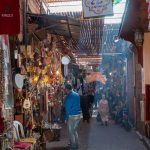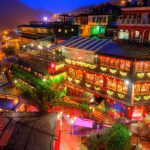Table of Contents
After experiencing carnival in Rio five times – from tourist mistakes to local bloco parties – I’ve learned how to navigate the world’s biggest party like a true Carioca. Forget what you’ve seen on TV; here’s your real guide to experiencing Carnival beyond the tourist spectacle.
Beyond the Sambadrome
Yes, the Sambadrome is spectacular, but it’s only a fraction of Carnival. The real magic happens in the blocks – street parties that pop up across the city. While tourists flock to the famous Cordão do Bola Preta, locals know the best blocos are in neighborhoods like Santa Teresa and Botafogo. My favorite? A tiny Bloco in Laranjeiras starts at 7 AM with locals sharing homemade caipirinhas.
The secret to finding authentic blocos? Follow the drum rehearsals in the months leading up to Carnival. These practice sessions, called ensaios, happen in neighborhood squares and give you insight into which blocos have the best energy. Plus, you’ll meet locals who can invite you to the more secretive parties that never make it onto tourist calendars.
The Timing Strategy
Carnival officially lasts five days, but Rio parties for nearly a month. Pre-Carnival blocos start in January, and some of the best celebrations happen after the official Carnival ends. The key? Pick your battles. Don’t try to party every day – you’ll burn out before the main events. Local wisdom suggests alternating party days with recovery days.
Smart locals know that each time slot has its own character. Morning blocos (8-11 AM) are more family-friendly and often feature traditional marchinhas. Afternoon parties (2-6 PM) bring out the younger crowd and contemporary samba. Night blocos tend to be more intense, with experienced revelers who know how to pace themselves.
The Neighborhood Scene
Each Rio neighborhood has its own Carnival personality. Ipanema’s blocos are sophisticated beach parties, Lapa hosts the hardcore samba crowds, and Leblon offers family-friendly celebrations. The trick is matching your energy to the right neighborhood.
Start in laid-back Santa Teresa during the day, where artistic blocos wind through historic streets, offering breaks at charming cafes. Move to Lapa as night falls for authentic samba – the Arcos da Lapa area transforms into an open-air samba school. End in Copacabana’s beach blocos, where locals dance until sunrise. The key is knowing each area’s peak hours: Santa Teresa blocos peak around 3 PM, Lapa comes alive after 8 PM, and beach parties hit their stride around midnight.
The Street Smart Approach
Carnival requires strategic planning. Carry only what you need: a small amount of cash, a copy of your ID (never the original), and your phone in a waterproof case. Locals wear simple cross-body bags or money belts. That fancy camera? Leave it at home. The best Carnival photos happen on phones anyway – you can’t properly dance samba while carrying expensive equipment.
Create a “bloco survival kit”: a small ziplock with cash divided into different pockets (never pull out large bills), a paper map with your accommodation marked, and emergency contact numbers written down. Experienced Carnival-goers know to wear shoes they don’t mind ruining and to carry a small packet of toilet paper – public facilities can be scarce.
The Costume Culture
Forget elaborate feathered outfits – those are for Sambadrome performers. Street Carnival is about creative, comfortable costumes that can survive hours of dancing. Group costumes are popular; my best Carnival was when our entire hostel dressed as retro Brazilian soccer players.
Local costume shops called Fantasia start popping up in January. The best ones are in the Saara shopping district, where you’ll find affordable options and can mix and match pieces. Pro tip: buy your costume elements separately and create something unique. Most importantly, test your costume’s durability – if you can’t dance freely for hours in it, it’s not right for blocos.
The Local Party Protocol
Each bloco has its traditions. Learn the most popular marchinhas (traditional Carnival songs) before you go – locals love when foreigners know the classics. “Mamãe Eu Quero” and “O Abre Alas” are essential starting points. Beyond the music, understand the call-and-response patterns that different blocos use.
The real key to bloco culture is respect for tradition. Never push to the front of a parade unless invited. Join the “wings” (alas) of the parade rather than blocking its progress. Most importantly, learn to read the crowd’s energy – some blocos are for active dancing, others for gentle swaying and singing. Watch how locals interact and match their intensity.
The Transportation Truth
During Carnival, Rio’s normal transportation rules go out the window. Metros run 24/7, but they’re packed. Smart locals use the city’s lesser-known bus routes or walk between blocos. Some of my best Carnival memories come from these walks, joining impromptu street parties between official events.
Keep a paper map marked with taxi stands that locals trust. Download offline maps and ride-sharing apps as backups. Most importantly, learn the parallel streets to major bloco routes – these offer quicker walking paths between celebrations and usually host pop-up food stands with shorter lines.
The Recovery Routine
Surviving Carnival like a local means mastering the art of recovery. Every neighborhood has its trusted hangover restaurants – mine was a tiny juice bar in Flamengo that served the best açaí bowls. Learn to pace yourself with water between drinks, and always know where to find coconut water vendors.
Locals know the best recovery spots: the fresh juice bars in Botafogo open early specifically for post-bloco recovery, and certain beach vendors specialize in reviving electrolyte drinks. Build relationships with these vendors early in your stay – they’ll save you during the festival’s peak days.
The Hidden Gems
Some of Carnival’s best moments happen away from the major blocos. Local samba schools open their rehearsals to the public in the weeks leading up to Carnival. These rehearsals often feel more authentic than the main parade. The Tuesday night rehearsals at Mangueira offered better samba and more local interaction than any tourist-heavy event.
Look for “baterias” (drum sections) practicing in neighborhood squares. These informal gatherings often turn into impromptu parties with better music than organized events. Ask local shop owners about “ensaios de rua” (street rehearsals) – they often know about upcoming practices that aren’t publicized.
The Cultural Connection
Remember that Carnival isn’t just a party – it’s a cultural celebration with deep historical roots. Take time to understand the significance of different samba schools, the meaning behind traditional songs, and the importance of Carnival to Rio’s communities.
Visit the smaller samba schools in the weeks before Carnival. Places like São Clemente and Unidos da Tijuca often welcome visitors to their preparatory events. These venues offer chances to learn about Carnival’s social and political significance from people who’ve participated their entire lives.
Making It Work
Real Carnival happens at street level, in the friendships formed during long days of dancing, and in the small moments between big events. Don’t try to plan everything – let the festival’s energy guide you. The best memories often come from the unexpected moments between the big events. Are you ready to dive into the world’s greatest party?

I’m Garrett, a seasoned photojournalist with a passion for uncovering the world’s hidden treasures. My journey is fueled by a deep curiosity for diverse cultures and breathtaking landscapes. When I’m not behind the lens capturing the world’s wonders, you can find me exploring underwater realms or sharing my passion for discovery with my two adventurous children.




